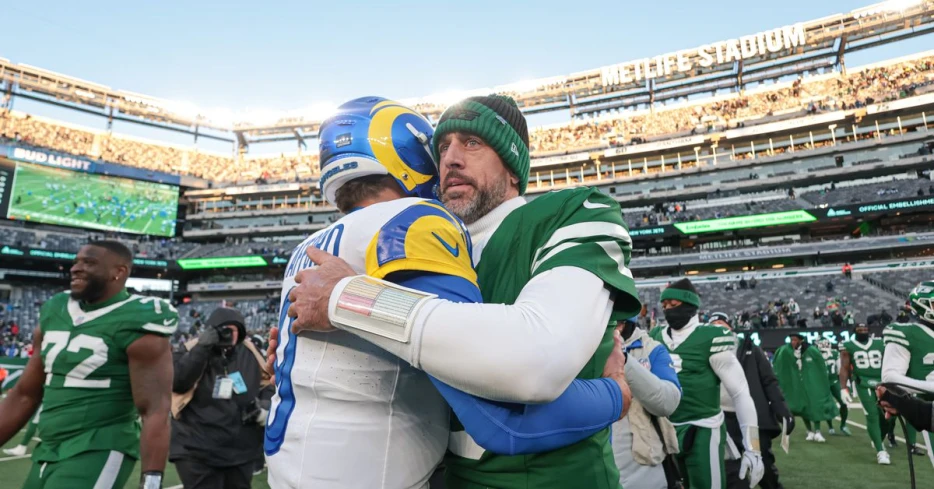
 Turf Show Times
Turf Show Times
Can Matthew Stafford reach the pantheon of these great 37-year-old quarterbacks?
Extending your career to age 37 and beyond is a relatively new phenomenon in the NFL. How 37-year-old Matthew Stafford will perform this season is anyone’s guess, but the possibility of being the best quarterback in the league is only imaginable because we’ve seen it happen before with 37-year-old MVPs like Peyton Manning and Aaron Rodgers.
Could Stafford be the next?
The only two pre-1990s quarterback to throw over 400 passes at age 37 were George Blanda, who had a league-leading 505 attempts for the Houston Oilers in 1964, and Roger Staubach.
The Hall of Famer who briefly retired at age 32 — and then returned to play 16 more seasons — led the NFL with 27 interceptions that year. Which was at least not as bad as the 42 interceptions that he threw in 1962 or the 30 interceptions that he threw in 1965.
Yes, it was a different passing era, but Blanda threw the most interceptions in every season from 1962 to 1965, a total of 124 interceptions in four years.
That was 39 more interceptions than the next-most by any quarterback.
Blanda continued to start at quarterback until he was 39, but spent his 40s as a kicker for the Oakland Raiders and extending his career until he was 48. He threw his last NFL touchdown when he was 47, but his last interception when he was 48.
Staubach had 461 passes for the Cowboys in 1979, throwing 27 touchdowns and 11 interceptions for a team that made the playoffs at 11-5. It would be Staubach’s final season despite being his fifth straight Pro Bowl nod.
We wouldn’t see another QB throw at least 400 passes at age 37 until Steve DeBerg in 1991, which he did with the Kansas City Chiefs.
History will look back on the 90s as the transition period from an era where QBs were expected to retire by 35 into one where these signal callers (and the NFL) realized they were leaving millions of dollars and many opportunities on the table by giving up too soon.
The league changed rules to protect their stars even more than they were already being protected and QBs were changing their health regiments to make sure they could squeeze every last day out of their playing careers...
Beginning with Tom Brady’s well-documented journey to turn a dad...